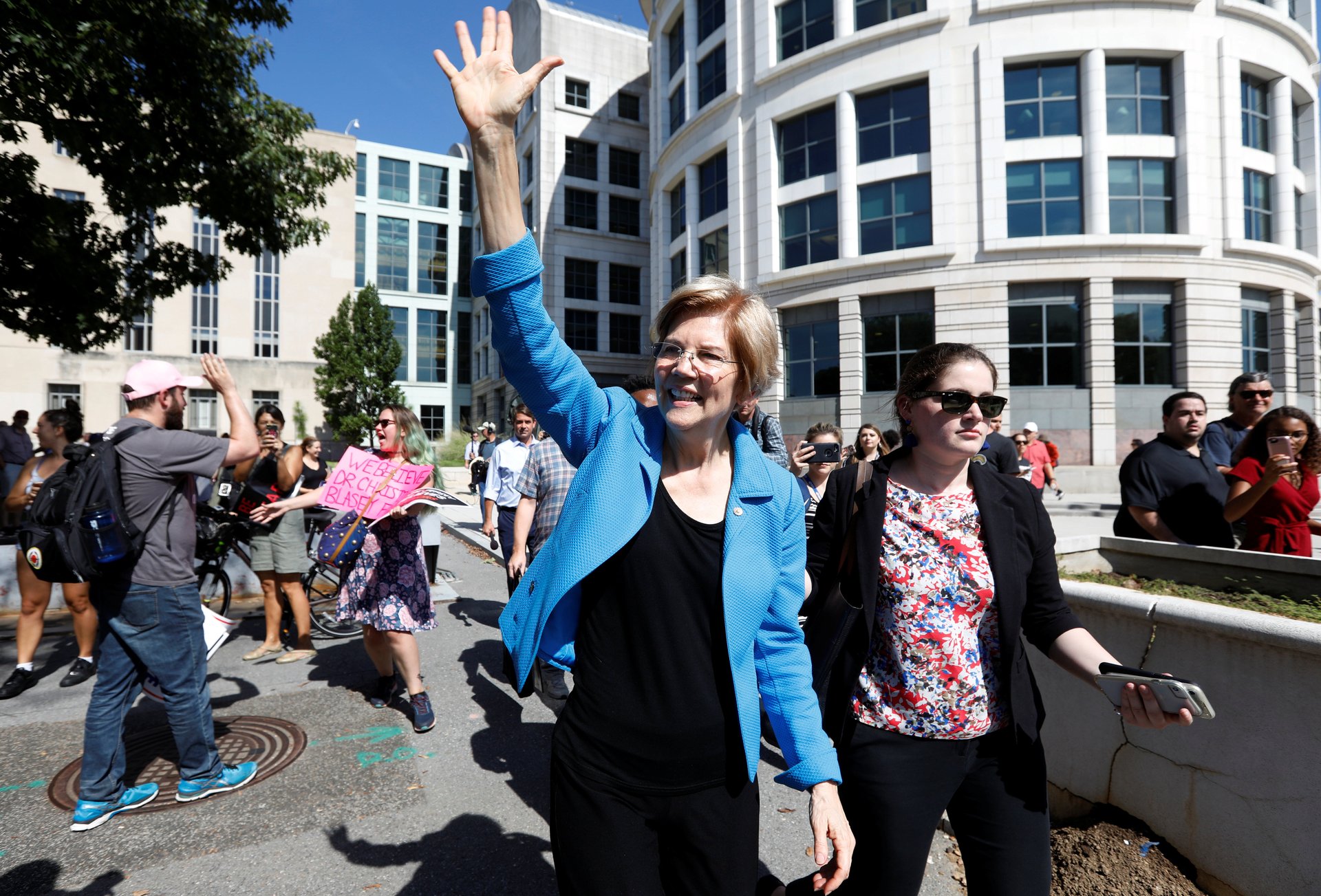Democratic candidates criticize the labor model of Uber and Lyft–and keep using them
Sen. Elizabeth Warren has made fighting big technology companies a key focus of her Democratic presidential campaign, including Uber and Lyft.


Sen. Elizabeth Warren has made fighting big technology companies a key focus of her Democratic presidential campaign, including Uber and Lyft.
Indeed, many of the Democratic candidates have not only advocated for gig workers but have also used their positions to demand for labor reforms. In May, senator Bernie Sanders introduced a bill to protect workers’ right to unionize, co-signed by senators Warren, Kirsten Gillibrand, Kamala Harris, and Cory Booker, as well as co-sponsored a similar bill that would reclassify the definitions of being an employee, also co-signed by Booker and Gillibrand.
Despite Democratic candidates indicating concern over Uber’s treatment of its gig workers, ride-hailing has become central to their campaign operations. Out of the 2020 presidential candidates, the most vocal about Uber and Lyft’s labor model are also the ones making plenty of payments on ride-hailing services, according to Federal Election Commission (FEC) filings from Jan. 1 until now.
Collectively, these Democratic candidates’ campaigns took at least 2,629 Uber and Lyft rides and spent at least $68,481, according to FEC data. (Meanwhile, the Trump re-election campaign alone spent about $18,239 on 1,140 Uber rides in the past two quarters.)
Quartz contacted all of the candidates’ representatives for comment and will update this story with any responses.
With the exception of Sanders, the leading candidates have taken more Ubers and Lyfts than any other ground transportation services (rentals, limos, taxis) in the past two quarters, according to FEC data.
The number of rides they take shows the convenience of and growing dependence on ride-hailing when campaigning town to town, particularly as Uber and Lyft spread to more rural areas. Plus, it’s often a more cost-effective option than renting a car or driving around in a limousine.
While the ride-hailing companies have upended the taxi industry, some candidates still used taxis in cities like Newark, New Jersey, New York City, and Boston.
Warren’s campaign, with a staff of over 300, has taken the most Uber and Lyft rides to date: In the second quarter, April through June, her campaign took 452 rides, costing $8,439, up from 212 rides that cost $3,462 in the first quarter, according to FEC data. In total, the Warren 2020 campaign has spent $11,902 on ride-hailing services and hailed 664 rides so far.
While Warren’s campaign has taken the most rides, Harris’s campaign, a 44-member team, has spent the most money. Harris, whose brother-in-law Tony West is Uber’s general counsel, has previously said that she is “standing” with gig workers. Her campaign has spent $14,344 on 149 rides to date.
Other presidential candidates who have voiced support for striking workers include mayor Pete Buttigieg (who has spent $9,152 on ride-hailing services to date) and entrepreneur Andrew Yang ($9,375). Former vice president Joe Biden, with a 185-member campaign, spent $2,579 in the second quarter; his campaign did not file expenses for the first quarter. Booker has spent $4,317 on rides, and Gillibrand, $8,200.
Some campaigns have ramped up their usage of Uber and Lyft in the second quarter. Sanders’s campaign, with a staff of 87, had the biggest uptick, from just nine rides in the first quarter to 269 rides in the second quarter, about a 2889% increase. Buttigieg’s campaign, which carries over 250 staffers, also had a large increase in rides, from 36 to 306, a 750% increase; Harris’s campaign took 29 rides in the first quarter and 120 in the second quarter, a 313% increase.
The growing use of Uber and Lyft is also blurring political divisions. Uber has long been seen as a “GOP darling,” but in reality, both Democrats and Republicans use Uber. FEC data shows Democratic candidates, including Buttigieg, Warren, and Booker, have a preference for Uber over Lyft. Harris has a slight preference for Uber. Sanders, however, in both quarters, hailed more Lyfts than Ubers.